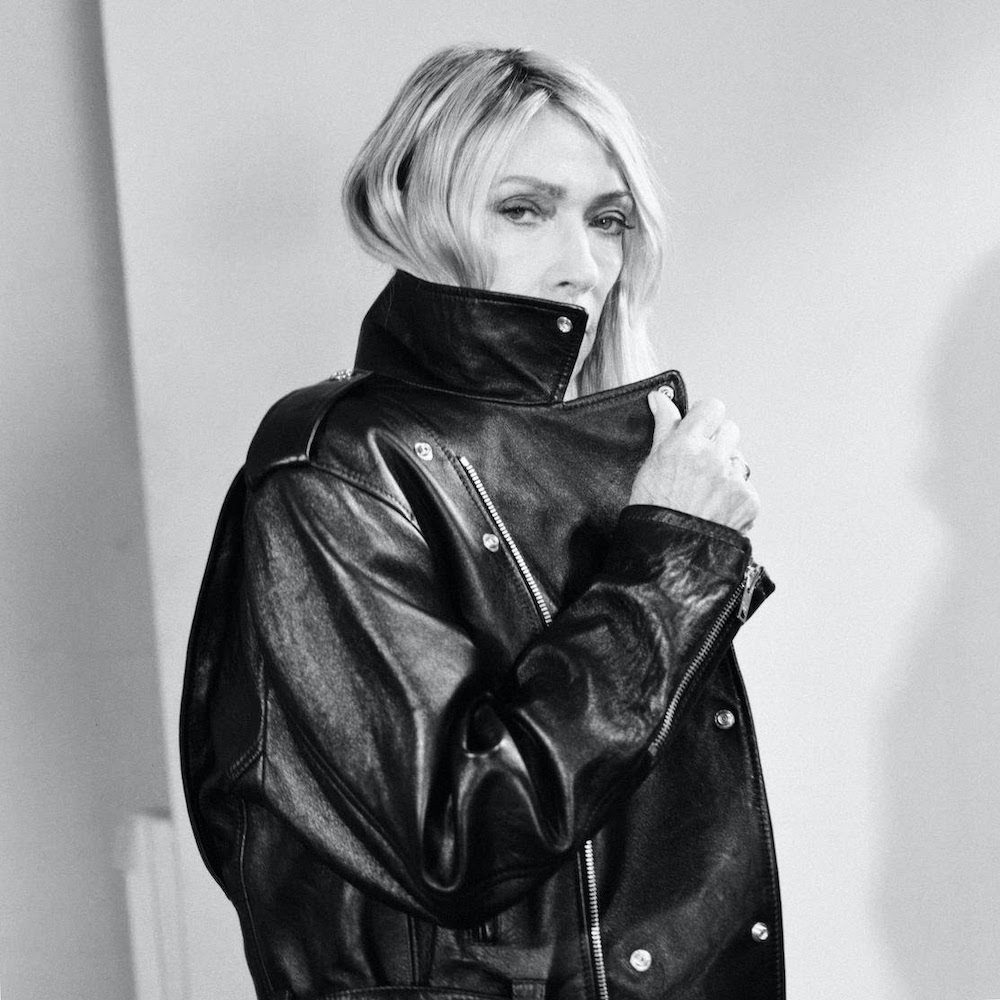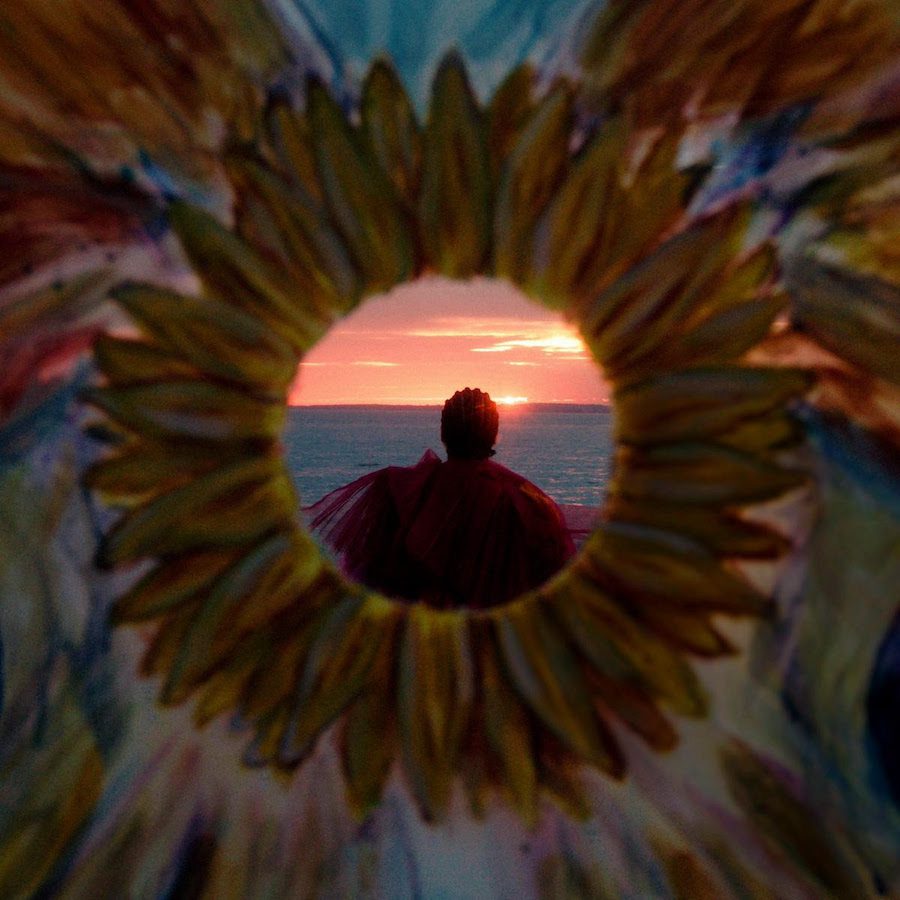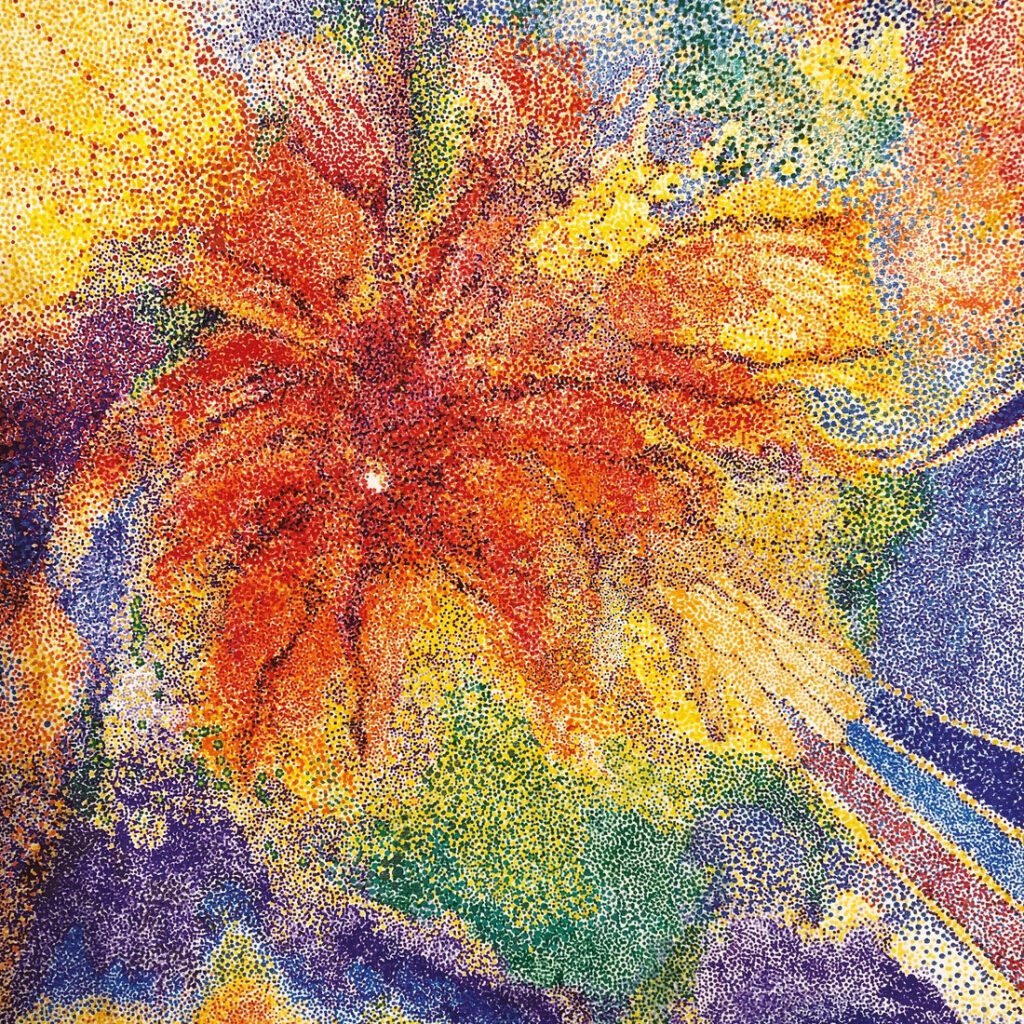
In your memoir, Girl In A Band, you revisit different eras of your life and your experiences within your different bands. Were there any memories that you had almost forgotten about until sitting down to write your book?
GORDON: Probably. It’s not like I remember it now though. Writing does help me think, though, and you can start remembering things. I couldn’t recall something specific right now.
Did you have any journals from your childhood or adulthood that you’ve held on to and referred to?
GORDON: No. I’ve always believed in, like, self-editing. The things that are important will float to the surface. I couldn’t tell you what most of my songs sound like, but I’m always surprised when I hear one and I think, “Oh, that wasn’t so bad.” It’s kinda like that.
Acting In Gus Van Sant Films (2005 & 2018)
The very first film you acted in was Last Days when Gus Van Sant cast you as a record executive, which is a somewhat fictionalized spin on Kurt Cobain’s final weeks before his death.
GORDON: Actually, I don’t know if that was my first film. I think it was Boarding Gate with Olivier Assayas maybe.
Could it be that it was filmed before Last Days? Because I think it screened a year or two afterwards. What was it like shooting with Gus on that set?
GORDON: I knew Gus a little bit, so that was cool working with him. He’s just very open. He’s into improv, and we basically just rehearsed the scene a couple times and then shot it. I improvised what I said, and he would suggest making it shorter or something. When we shot it, it was just Harris Savides, that incredible DP who unfortunately died, a sound person, and Gus, so it was very intimate. Yeah, it was fun! I liked it.
Gus cast you again more than a decade later in his film Don’t Worry, He Won’t Get Far On Foot where you ended up doing a scene with Beth Ditto, of all people, for that too. What’s your working relationship like with Gus?
GORDON: Beth is great. She’s a natural. That was really fun, too. Joaquin and — gosh, who is the other actor? He was really good. Anyway, they were both super sweet and generous about my acting. I thought that was a pretty good movie, but it didn’t get as much attention as it should have.
Oh, Jonah Hill! It was Jonah Hill. And Udo Kier, who’s great, such a character. One would think the movie would be more bleak and depressing given the subject matter, but it wasn’t. He was able to achieve this special tone.
Working With Cult-Favorite Directors (Ongoing)
Since then, you’ve starred in a number of films in varying roles, like Boarding Gate, Todd Haynes’ I’m Not There, and the German horror film The Nightmare. What film role do you look back on most fondly?
GORDON: I’ve been very lucky: I worked with Gus, Todd Haynes, Olivier Assayas, all my favorites. I liked Don’t Worry, He Won’t Get Far On Foot a lot. Boarding Gate was tough because I had to learn Cantonese, which was one of the hardest things I’ve ever had to do. It was just for the few lines. And I had to act next to the Robert Mitchum of Hong Kong cinema.
Did they give you a dialogue coach for that?
GORDON: No. They sent me the lines because I was on tour at the time. Every day, I sat down and tried to memorize the lines. I had a friend, my friend’s brother is married to a Chinese woman and — I think they slowed the tape down for me because it was so fast. It was so hard — and that helped. But when I got there, Olivier was just like, “Oh, you can just do it in English! This is Hong Kong.” And I was like, “No, I’m gonna do it in Chinese.”
Is there a director you would like to work with that you haven’t yet?
GORDON: I like Claire Denis a lot. She did a video for us, and I like her movies a lot. I love Catherine Breillat, but her English is terrible and she’s kinda brutal with her actors [laughs]. She used this Body/Head song in her new film L’Été Dernier and I got to meet her in Paris. She’s really such a character. Sweet.
Directing The Breeders’ “Cannonball” Video (1993)
You flipped to behind the camera when you co-directed the Breeders’ music video for “Cannonball,” which boasts one of the best basslines of all time. How did you and Spike Jonze come up with the idea for that video?
GORDON: A great song. I think Kim asked me because she didn’t trust anybody. She’s very skeptical of the man or any music authority people. But I didn’t have a production company or anything but Spike did, so I asked him.
Was the music video, the layout, the rolling ball all your idea?
GORDON: The mirror was my idea, which I took from this artist Dan Graham. He used to do this piece with a mirror behind him where he would stand there and describe the audience, then turn around and describe himself describing the audience, all very self-conscious and what not. So I had this idea to put the mirror behind the band. Also I had this idea to bring in some element of the film performance; they put on weird clothes and stuff. I don’t know why I thought that was good. I guess because music videos always have people changing their clothes? Spike’s idea was the genius idea: the bowling ball. He brought in this literal aspect to it for the cannonball, which was great.
Collaborating With Peaches, Cypress Hill, and Beck (2015, 1993, & 2013)
You’ve done too many musical collaborations to get into them all, but I did want to pick a few highlights. Your part on Peaches’ song “Close Up” is the most in line with your current solo sound. In the song’s music video, you play her wrestling coach while these increasingly ridiculous things happen. What do you remember from shooting that video?
GORDON: I hated that video, actually. It’s just not my aesthetic at all.
It’s very Peaches.
GORDON: Yes, very Peaches.
Sonic Youth and Cypress Hill recorded “I Love You Mary Jane” together for the 1993 film Judgement Night, but the soundtrack ended up being far more popular than the movie itself. At that point, Sonic Youth had already had Chuck from Public Enemy sing on “Kool Thing” so you weren’t new to rap and rock collaborations, but it still took some work to figure out the song. In an oral history of the soundtrack for Rolling Stone, you said things started taking off once the excessive amount of weed in the studio was overpowering. How was it?
GORDON: So much weed and listening to the bass sound, the sub zero, sub sound. Just being so stoned. I think it was a couple days of recording together, or we were with them a couple days at least. They expected us to do this noisy thing. “Do your noisy shit!” But we didn’t want to make a bad Cypress Hill song. Honestly, I didn’t like that soundtrack. Most of the way rock and rap was supposed to mesh just sounds, I don’t know, not good to me. It sounded kinda corny. I shouldn’t say that, but yeah. Cypress Hill picked the song title. We just kinda went with their lead. We didn’t want to fuck up the Cypress Hill song.
In 2013, Beck released a standalone 15-minute-long song called “I Won’t Be Long,” on which you do some spoken word. It stands out in his catalog as a dreamy space-rock song, but has largely been forgotten since then. Did he approach you with that spoken word part in mind?
GORDON: I don’t even remember doing that. It’s funny you bring that up. I don’t even remember what the song sounds like.
He didn’t put it on an album or anything, but I was taken aback by how well it holds up. It’s a pretty song. What do you remember from that?
GORDON: Yeah nothing. Just being in the studio and recording. I was in LA, but I hadn’t moved here yet. I don’t know what I was doing here at the time.
Appearing In Short Films Like No Alternative Girls (1994)
In Tamra Davis’ 1994 short film No Alternative Girls, the director asks you, Courtney Love, Kathleen Hanna, and Julia Cafritz for your opinion on “female performers who use their sexuality to sell their music.” You answered by saying, “The more sexy a performer tries to make herself in a conventional way, like Janet Jackson, the more generic she’s become.” Has your opinion changed since then?
GORDON: I guess I still feel like that [laughs]. It’s just that different things can be sexy. It’s not like I have a problem with it, it’s just less interesting?
So the keyword for you there is “conventional”?
GORDON: Yeah.
Where do you think the line is between self expression, sexual liberation, and using our human bodies as art? Do you think those things overlap?
GORDON: Oh I don’t know. People can do what they want. Sometimes people make it their subject matter, yeah. Obviously the clothes a performer wears, musicians, has always been — a vaudevillian type of history comes out of it in a way. There’s always been this playing with gender within it, with Little Richard and later Mick Jagger, David Bowie. I always felt like when men are onstage they’re more free to express what would be called a feminine side and interact with one another in a way that — you know, like when men play sports and they hit each other on that butt — is close. I like seeing how people use their clothes. I guess I could call it fashion? I like seeing how they use or subvert fashion. It’s not about being chic. It’s about being an entertainer.
So when you said, “The more sexy a performer tries to make herself in a conventional way, like–”
GORDON: I guess what I meant was that, well, the sexiest thing I ever saw was this band that opened up for us in Detroit called Universal Indians. It’s this droney, experimental noise band. Two of the people went on to be Wolf Eyes. This girl Gretchen was wearing kinda baggy corduroy pants and maybe a flannel shirt or t-shirt, and she had this rock that she was using as a slide on her guitar? I thought something about it was just sexy.
Maybe it’s just that things that are conventional are not that stimulating. You know, someone like Billie Eilish. She’s fun to watch and people like her because she’s not doing that. She’s doing something different with her looks. Debbie Harry was always funny and had a sense of irony about her dressing. Her whole thing was that Blondie was a cartoon character. There’s not that much humor, not that there has to be.
MTV Bans Sonic Youth’s “100%” Music Video (1992)
MTV banned Sonic Youth’s “100%” music video because you’re wearing a bootleg Rolling Stones shirt with “eat me” written on it. Right away, you knew that was hypocritical because MTV aired other music videos that had angsty lyrics or sexually provocative images.
GORDON: I was never sure if it was what it said or if it was because it was a bootleg Rolling Stones shirt? I don’t know.
The whole thing feels very of the time, that’s for sure. Where, if at all, do you think the line for censorship should be drawn in public art?
GORDON: Pretty much no, never. Art that’s super violent, even then, it’s something that usually doesn’t have a very big audience anyway. I just don’t believe in censorship.
Kim’s Bedroom (2000)
You curated the exhibit Kim’s Bedroom at MU in 2000 as a way to highlight visual arts, photography, video, fashion, and of course music. The project included a lot: an exhibition, a music performance, a film night, and a publication that came with a CD. What were your takeaways from organizing that exhibition?
GORDON: The exhibit Kim’s Bedroom at MU in Holland was done so well. I think the person who was the director was interested in New York downtown. So some of the people who were in the catalog or the book wrote small pieces. They weren’t in the visual aspect of the exhibit. Anyway, it was just a collection of people I knew, really.
Revisiting the list of artists you invited to be a part of the project, it’s clear just how expansive your interests and influences were: Jim O’Rourke, Cat Power, John Fahey, Sofia Coppola, Richard Kern, Susan Cianciolo, Tamra Davis. Was there anyone you asked to participate that you were nervous might say no?
GORDON: There was a CD and John Fahey I think submitted something on the CD, but not everybody did or was asked to. I remember being nervous about asking Mary Gaitskill about it, but I think she did something.
You’ve always considered yourself to be an artist first and a musician second, but I don’t think the average music fan knows just how deep your output within the art world goes: drawing, painting, curating exhibits, building installations, creating collages, writing for publications like Artforum, and beyond. Have you ever felt like you’ve had to sacrifice your artistic pursuits, or even your initial art career, because of how dominant Sonic Youth ended up becoming?
GORDON: Yes, I suppose it was kinda difficult to have a full-time art career and a full-time music career. But around the early 2000s, that’s when I felt very motivated to pursue doing more visual art.
Founding The Clothing Line X-Girl (1993)
You co-founded X-Girl in 1993 when Mike D of Beastie Boys asked if you were interested in creating your own clothing line. What was the initial appeal of doing that?
GORDON: It actually wasn’t Mike D of the Beastie Boys who asked me and my friend Daisy Von Furth if we wanted to do a girl’s line. Mike and the Beastie Boys were somewhat involved with XLARGE. But it was somebody that we knew who worked at the store, a friend of ours who knew us and would overhear us talking about bootcut corduroy, Levi’s from the ’70s, and trying to find perfect t-shirts, things like that. That’s the person who actually asked us, his name is Eric.
Why did you pick Mike Mills to design the X-Girl logo?
GORDON: Mike Mills was just this graphic designer then. I don’t know how we found him. Maybe Daisey found him? This was way before he started doing films. So he designed a lot of the T-shirts for us as well as the logo.
When you returned to X-Girl in 2016, what did you want to do differently the second time around?
GORDON: We didn’t actually do anything in 2016. We sold the line to the Japanese, I think in the mid-’90s, and basically had nothing to do with it after that.



